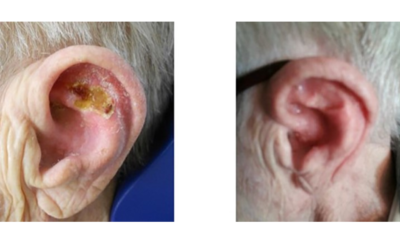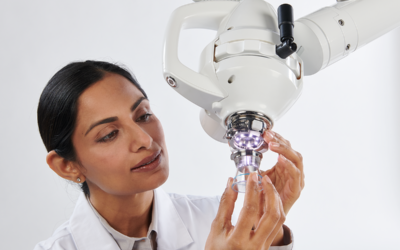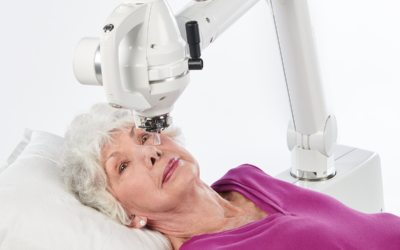Xstrahl, a global leader in the delivery of superficial radiation therapy devices and preclinical radiation research systems, will demonstrate Radiant Aura at the 2024 Congress of Clinical Dermatology, Amelia Island, FL from May 30 to June 2
Squamous Cell Carcinoma
Xstrahl to Showcase Dual Modality Treatment Solution for Dermatologists at NorCal 2024
Xstrahl, a global leader in the delivery of superficial radiation therapy devices and preclinical radiation research systems, will demonstrate Radiant Aura at the CalDerm 2024 NorCal Conference at the Meritage Resort & Spa from May 3-5 in Napa, CA.
Electronic brachytherapy and superficial radiation therapy are excellent treatment options for patients with basal cell or squamous cell carcinomas
For many patients with basal cell carcinomas or squamous cell carcinoma, radiation therapy can yield better functional or cosmetic outcomes than surgical intervention and radiation therapy may be the preferred option. For other patients with medical comorbidities or...
The Dermatology Insider 2023
The Dermatology Insider 2023 is Xstrahl’s magazine for dermatologists. This issue of the Dermatology Insider includes patient stories about having SRT treatment for their skin cancer. In addition, hear from a dermatologist as he describes his experience using radiation therapy to treat non-melanoma skin cancer (NMSC). See two case history reports of radiation therapy treatment for skin cancer using SRT and eBt, detailing the number of treatments, dose per treatment, reasons for radiation therapy, as well as before and after images of the results. Xstrahl introduces Radiant Aura, which recently received US Food & Drug Administration (FDA) 510(k) Clearance. We share more about using Radiant Aura and answer the most commonly asked questions in our FAQ section.
Radiant™ Aura Receives U.S. Food and Drug Administration (FDA) 510(k) Clearance
Radiant™ Aura Receives U.S. Food and Drug Administration (FDA) 510(k) Clearance
Expands office-based treatment options for millions of non-melanoma skin cancer (NMSC) patients
Xstrahl, a global leader in the delivery of superficial radiation therapy devices and preclinical radiation research systems, announced its Radiant™ Aura treatment solution has received U.S. Food and Drug Administration (FDA) 510(k) clearance. With advanced features for expanded clinical use, simplified patient positioning, and additional patient comfort, Radiant Aura brings radiation therapy to NMSC patients in any dermatology office.
Two Case Histories: Office-Based Radiation Therapy for the Dermatology Clinic
Dr. Sean E. Mazloom, MD, FAAD, from ReJUVA Dermatology, Vein & Skin Cancer Center, Venice, FL has been using the RADiant system to treat both squamous cell carcinomas (SCC) and basal cell carcinomas (BCC) in his practice. Depending on a number of factors specific to each patient, he has treated these conditions with superficial radiation therapy (SRT) and electronic brachytherapy (eBT). Below are two case studies that describe the treatment process and results.
Treating My Skin Cancer with Superficial Radiation Therapy was the Perfect Alternative to Surgery
Myrna has a history of multiple skin cancers that were treated with Mohs micrographic surgery. During the last year, Myrna was diagnosed twice with basal cell carcinomas (BCC). Her dermatologist, Dr. John Binhlam of Advanced Skin & Laser Center, in Brentwood, Tennessee recommended superficial radiation therapy (SRT) as an alternative to Mohs surgery based on several factors unique to her. Myrna had SRT treatment delivered with the RADiant system, right in Dr. Binhlam’s office.
Superficial Radiation Therapy was a Simple Choice for My Skin Cancer
Marcia is 74 years old and a great-grandmother from Bell Buckle, Tennessee. Last year, she noticed bleeding from a tiny spot on the tip of her nose. At her next appointment, she had her dermatologist, Dr. John Binhlam, take a closer look. He did a biopsy on the spot, and she was diagnosed with an invasive squamous cell carcinoma (SCC) of the nasal tip. After a discussion of Mohs micrographic surgery versus nonsurgical superficial radiation therapy (SRT), Marcia chose to have the latter treatment done using the RADiant system at his office, Advanced Skin & Laser Center in Brentwood, Tennessee.
Easy Non-Surgical Superficial Radiation Therapy was Ideal for My Skin Cancer
Mike had a quarter-sized spot on his leg that was not healing. A patient of Dr. John Binhlam’s dermatology practice for more than 20 years, he decided to seek treatment to heal his leg. A diagnosis of squamous cell carcinoma led him to non-surgical superficial radiation therapy (SRT) treatment from Dr. Binhlam using the RADiant system at Advanced Skin & Laser Center in Brentwood, TN.
Contact Us








